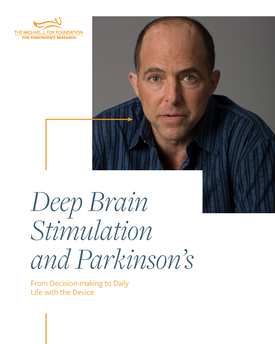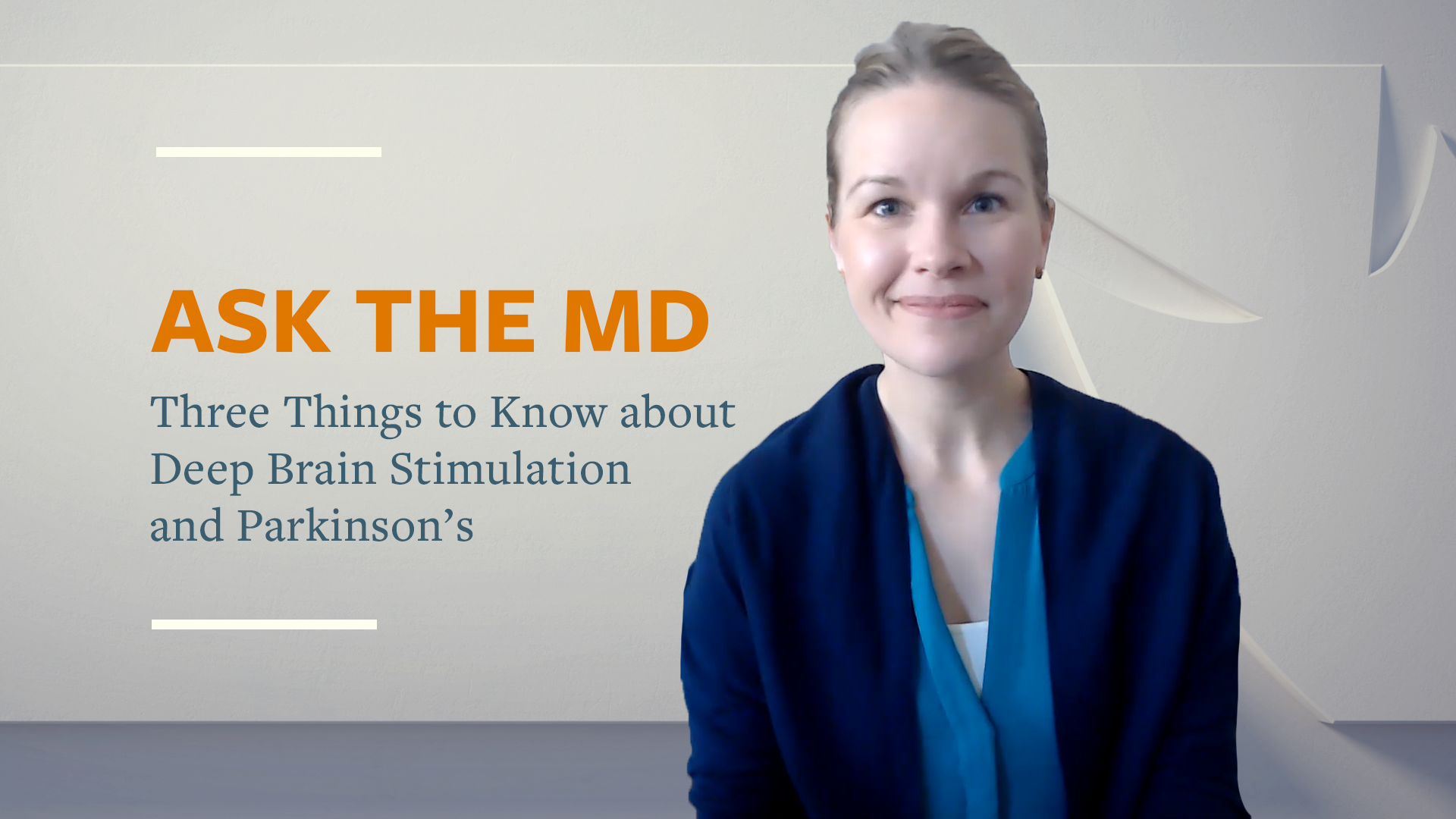Deep brain stimulation, a surgical procedure for Parkinson's, can help ease motor symptoms and decrease medication needs in some people. Researchers are looking for ways to improve the experience of deep brain stimulation and to broaden use of this therapy.

Guide on Deep Brain Stimulation and Parkinson’s
This resource educates patients and care partners about deep brain stimulation (DBS) surgery as a treatment option to help manage symptoms, provides practical tips for thinking about, undergoing and living with DBS, includes perspectives and voices from the patient and family community; and shares the latest research and DBS devices available.

Deep Brain Stimulation
Deep brain stimulation (DBS) is the most commonly performed surgical treatment for Parkinson's. A surgeon places thin metal wires in the brain; these wires send electrical pulses to the brain to help control some motor symptoms.
While transformative for some, DBS is not for everyone. This treatment is approved for people who have had Parkinson's disease for at least four years and who get a benefit from medication but have motor complications, such as significant "off" time (periods when symptoms return because medication isn't working well) and/or dyskinesia (uncontrolled, involuntary movements).
DBS typically works best to lessen motor symptoms of stiffness, slowness and tremor. It doesn't work as well for imbalance, freezing of gait (sudden inability to move when walking) or non-motor symptoms. As DBS may worsen thinking or memory problems, it's not recommended for people with dementia.

How Deep Brain Stimulation Works
Exactly how DBS works is not completely understood, but many experts believe it regulates abnormal electrical signaling patterns in the brain. To control normal movement and other functions, brain cells communicate with each other using electrical signals. In Parkinson's disease, these signals become irregular and uncoordinated, which leads to motor symptoms. DBS may interrupt the irregular signaling patterns so cells can communicate more smoothly and symptoms lessen.
Deep Brain Stimulation Surgery
A team of experts, including a movement disorder specialist (a neurologist with extra training in Parkinson's) and a brain surgeon, conducts an extensive assessment when considering DBS for someone. They review your medications and symptoms, examine you when you're on and off Parkinson's medication, and take brain imaging scans. They also may do detailed memory/thinking testing to detect any problems that could worsen with DBS. If your doctors do recommend you for DBS and you are considering the surgery, discuss with your care team the potential benefits (decreased tremor, fewer medications, etc.) as each person's experience is unique. It's also critical to discuss the potential surgical risks, including bleeding, stroke and infection.
In DBS surgery, the surgeon places thin wires called electrodes into one or both sides of the brain, in specific areas (either the subthalamic nucleus or the globus pallidus interna) that control movement. Usually you remain awake during surgery so you can answer questions and perform certain tasks to make sure the electrodes are positioned correctly. Some medical centers now use brain imaging to guide the electrodes to the right spot while a person is asleep. Each method has its pros and cons and may not be suitable for everyone or available everywhere.
Once the electrodes are in place, the surgeon connects them to a battery-operated device (similar to a cardiac pacemaker), which usually is placed under the skin below the collarbone. This device, called a neurostimulator, delivers continuous electrical pulses through the electrodes.
A few weeks after surgery, a movement disorder specialist programs the neurostimulator to help treat your unique symptoms. Your doctor will gradually tweak your DBS settings over time while adjusting your medications. Most people are able to decrease (but not completely discontinue) Parkinson's drugs after DBS. Determining the optimal combination of drugs and DBS settings — with the greatest benefit and the fewest side effects — can take several months and even up to a year.
Research to Improve Deep Brain Stimulation
Researchers are working to improve upon existing DBS devices and methods to help treat more symptoms and more people. Some researchers are putting electrodes in a different area of the brain — the pedunculopontine nucleus — to treat walking and balance problems that don't typically improve with present-day DBS. Others are developing a "smart" DBS device that can record a person's unique brain signals and deliver electrical stimulation only when needed, such as when symptoms return, rather than continuously, as the current systems do. This could help reduce side effects such as numbness and weakness and lengthen the battery life of the neurostimulator, which would result in a longer time between battery replacement procedures.
Scientists also are planning to test deep brain stimulation in the first years after a Parkinson's diagnosis to see if the therapy may slow or stop disease progression. Testing in Parkinson's models showed the therapy may help protect brain cells, and a small human trial showed motor symptoms improved after early-stage DBS.
The medical information contained in this article is for general information purposes only. The Michael J. Fox Foundation for Parkinson's Research has a policy of refraining from advocating, endorsing or promoting any drug therapy, course of treatment, or specific company or institution. It is crucial that care and treatment decisions related to Parkinson's disease and any other medical condition be made in consultation with a physician or other qualified medical professional.


